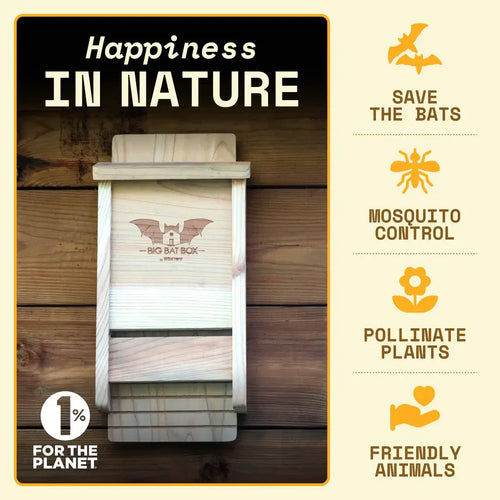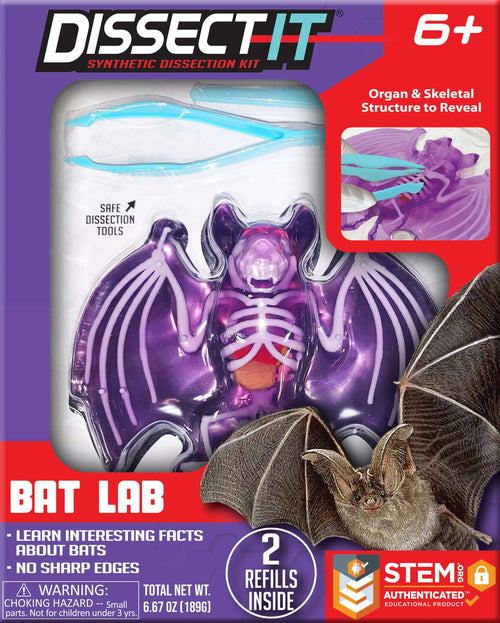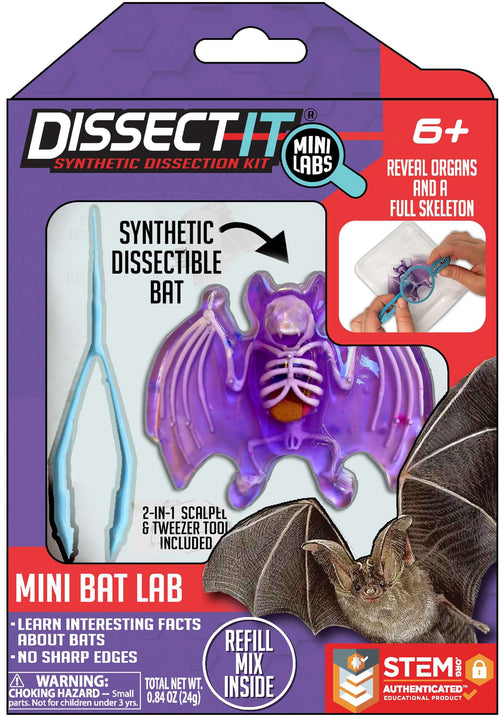No Products in the Cart
Meet the Bats: An Introduction to Our Nocturnal Friends

Why Bats Matter
If you’ve ever seen something flutter across the sky at dusk and thought, “Was that a bird?”—there’s a good chance it was a bat beginning its nightly adventure. Bats are the only mammals capable of true flight, and they make up nearly one-fifth of all mammal species on Earth. That’s right—out of roughly 6,400 known mammals, over 1,400 are bats!
Beyond their mysterious nighttime habits, bats are essential to our planet’s health. Insect-eating bats help farmers by devouring millions of crop pests every night. Fruit-eating bats pollinate plants like bananas, mangoes, and even the agave used to make tequila. Their role as pollinators and pest controllers makes them silent heroes of the ecosystem.
Fun fact: One little brown bat can eat more than 1,000 mosquitoes in a single hour—nature’s pest control at its best!
A World of Bat Diversity
Bats come in every size, shape, and personality. Some, like the bumblebee bat, are tiny enough to fit on your fingertip, weighing less than a penny. Others, like flying foxes, boast wingspans of over five feet and feed on fruit in tropical forests.
Scientists group bats into two main families:
- Microbats – Small, mostly insect-eating bats that use echolocation to hunt in the dark.
- Megabats – Larger fruit bats that rely more on keen eyesight and smell than on sound.
While all bats share the same basic anatomy (a flexible body with skin stretched between elongated fingers), their lifestyles couldn’t be more different. Some hang solo in a quiet tree hollow, while others live in colonies of thousands inside caves, bridges, or even abandoned buildings.
Encourage your students to explore the world map of bat species—every continent except Antarctica has them!
Classroom Connection: Bringing Bats to Life
When teaching about bats, it helps to emphasize how helpful they are rather than spooky. Use classroom visuals, compare their wings to a human hand, or play sound recordings of bat echolocation. You could even assign a quick creative writing prompt:
These types of imaginative exercises help students replace myths with curiosity and empathy—an important lesson in environmental education.
OBDK “Bees, Bats & Owl Boxes” Kit
For teachers who want to bring their nocturnal lessons to life, OBDK’s Bees, Bats & Owl Boxes kit is a perfect companion. It’s not a toy—it’s a beautifully crafted educational tool that helps students visualize how real wildlife shelters work.
By showing how different animals (like bats and owls) share habitats and space, this kit complements your unit on nocturnal creatures perfectly. It helps kids connect what they learn in class to the real world—without feeling like a sales pitch or gimmick.
You can find it on obdk.com under the nature & wildlife section
Teacher Takeaway
Bats are more than Halloween symbols—they’re vital, diverse, and endlessly fascinating creatures that keep our ecosystems in balance. Introducing them early in your curriculum can spark curiosity and empathy for wildlife, while building strong cross-curricular links between science, geography, and environmental studies.




